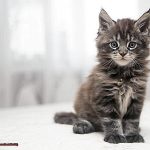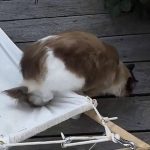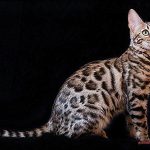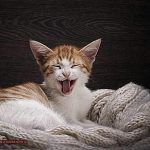Thinking about welcoming a Bengal cat into your family?
These captivating and adventurous felines are the epitome of beauty and fun. But hold your horses, or should I say, cats.
Before you pounce on the idea, let’s talk about the moolah involved. From the sticker shock of buying one to the ongoing expenses and unexpected vet bills, it’s crucial to know what you’re getting into financially.
So, in this blog post, we’ll explore all things Bengal cat ownership and get down to brass tacks – how much does it really cost to have one of these mesmerizing creatures by your side?
How much does a Bengal cat cost
Bengal cats are a popular and unique breed known for their stunning coat patterns and playful personalities. If you are considering adding a Bengal cat to your family, one of the first questions you may have is how much they cost. In this article, we will explore the factors that influence the cost of Bengal cats and help you understand what to expect when budgeting for your new feline friend.
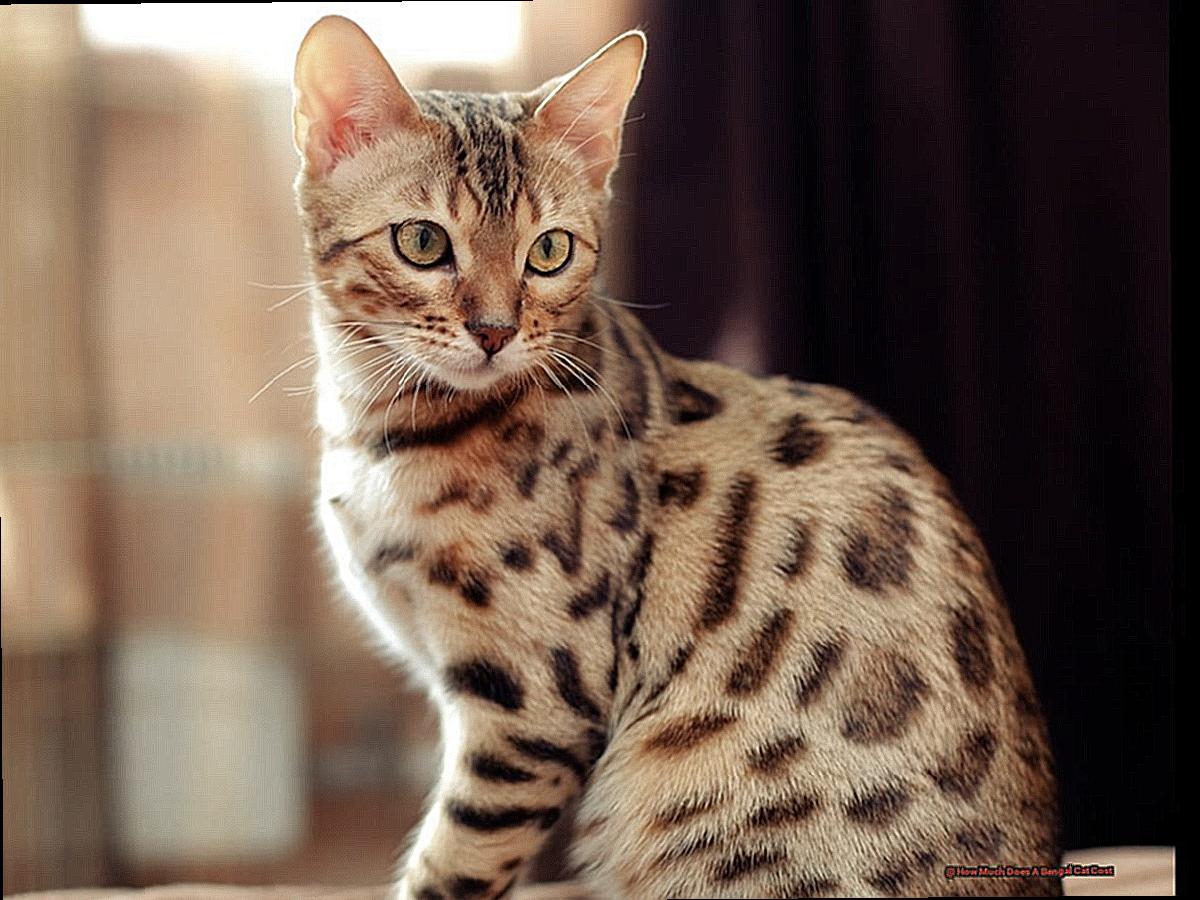
Factors Affecting Bengal Cat Prices:
Pedigree and Quality:
The pedigree and quality of a Bengal cat significantly impact its price. Cats with exceptional bloodlines, closer to their Asian leopard cat ancestors, such as F1 and F2 generations, tend to be more expensive. Show-quality Bengals, which meet specific breed standards, are also priced higher. However, if you are looking for a pet or breeder-quality Bengal, the price may be more affordable.
Coat Color and Markings:
The markings and coat color of a Bengal cat can influence its price. Bengals with highly sought-after patterns, like rosettes or marbled coats, may be priced higher than those with less distinctive markings. The more unique and striking the coat pattern, the more you can expect to pay.
Breeder Reputation:
Reputable breeders who prioritize the health and well-being of their Bengals will generally charge higher prices. These breeders invest time and effort into breeding healthy and well-socialized kittens, ensuring that they are raised in a loving environment.
Location:
The location where you purchase your Bengal cat can also affect the price. In areas where Bengal cats are in high demand or have limited availability, prices may be higher due to increased competition among buyers.
Additional Considerations:
Age of the Cat:
Kittens are generally more expensive than adult cats as they require more care during their early stages of development. If you are on a budget, consider adopting an adult Bengal cat, as they may be more affordable.
Additional Costs:
When budgeting for a Bengal cat, it’s essential to consider additional costs beyond the initial purchase price. These include vaccinations, spaying/neutering, microchipping, and ongoing veterinary care. Moreover, transportation fees may apply if you need to have the cat shipped from a different location.
Adoption Options:
If the cost of purchasing a Bengal cat from a breeder seems prohibitive, consider adopting one from a rescue organization or shelter. While there may still be adoption fees involved, they are often lower than buying from a breeder.
Factors That Affect the Cost of a Bengal Cat
If you’re considering bringing a Bengal cat into your home, it’s important to understand the various factors that can influence their price. Bengal cats are known for their unique coat patterns and wild appearance, making them highly sought after among cat enthusiasts. Here are some key factors to consider when determining the cost of a Bengal cat:
- Breed Quality: The quality of the breed plays a significant role in determining the price of a Bengal cat. Cats from reputable breeders who have invested time and effort into developing a high-quality bloodline will often come with a higher price tag. Look for distinct markings, vibrant coat colors, and well-proportioned bodies when assessing the breed quality.
- Pedigree and Lineage: Bengal cats with documented pedigrees tracing back to well-known and successful bloodlines tend to be priced higher. The reputation and achievements of the cat’s ancestors can significantly impact its value, especially in the show cat industry.
- Show Potential: If you’re looking for a Bengal cat to participate in cat shows, expect to pay more for a kitten with exceptional show potential. Cats with desirable physical attributes, temperament, and showmanship abilities are in high demand among breeders and show enthusiasts, driving up their cost.
- Gender: While the difference may not be substantial, female Bengal cats are generally priced slightly higher than males due to their potential breeding capabilities. However, this can vary depending on individual breeder preferences.
- Age: Kittens are typically more expensive than adult cats due to the additional care, vaccinations, and socialization required during their early stages of development. Older cats may be available at a lower cost, especially if they are retired show cats or breeding cats no longer needed in a breeding program.
- Location: The geographical location where you purchase a Bengal cat can influence its cost. In areas where Bengal cats are less common or where there is high demand, prices may be higher. Additionally, transportation costs may be added if you’re purchasing a cat from a breeder located far away.
- Breeder Reputation: The reputation of the breeder also plays a role in determining the cost of a Bengal cat. Well-established breeders with a track record of producing healthy and high-quality kittens often charge more for their cats. Their expertise, experience, and dedication to the breed contribute to the premium price they command.
- Supply and Demand: Like any other commodity, supply and demand can influence the cost of Bengal cats. If there is a high demand for Bengal kittens but a limited supply available, prices are likely to be higher. Conversely, if there is an oversupply of Bengal cats in a particular area, prices may be more competitive.
An Overview of Generations and Markings in Bengals
If you’re in the market for a Bengal cat, you’ve probably come across terms like F1, F2, spotted, marbled, brown, silver, and more. Understanding the differences between generations and markings is crucial in finding the Bengal that suits your preferences and budget. So, let’s dive into this fascinating world of Bengals and unravel the mysteries together.
Generations: From Wild Ancestors to Domestic Beauties
Bengals are classified into different generations based on their distance from their wild ancestor, the Asian leopard cat. The earlier generations, such as F1 and F2, have a higher percentage of wild blood and exhibit traits closer to their wild ancestors. As the generations progress (F3 and beyond), Bengals become more domesticated while retaining their stunning coat markings.
Markings: Spots and Swirls
Colors: From Browns to Snows
Within each marking category, Bengals come in a variety of colors. The most common color category is brown, which includes shades ranging from light golden to rich mahogany. Additionally, there are silver Bengals with striking silver coats, as well as snow Bengals that encompass seal lynx point, mink, and sepia variations. Charcoal Bengals are another captivating color variation worth mentioning.
Cost Factors: From Rarity to Quality
The price of a Bengal cat can vary significantly based on several factors. The generation plays a significant role, with earlier generations being rarer and therefore more expensive. Show-quality Bengals with desirable traits can also command higher prices compared to pet-quality Bengals.
It’s important to note that the cost of a Bengal cat should not be the sole determining factor. Finding a reputable breeder who prioritizes the health and well-being of their cats is crucial. Responsible breeders provide documentation of lineage and health records, ensuring that the kittens have been properly socialized.
Adoption from a rescue or shelter is another option to consider for those looking to provide a loving home to a Bengal cat at a lower cost.
Show-Quality Bengal Cats: What to Expect
Show-quality Bengal cats are the crème de la crème of the Bengal cat world. They possess exceptional qualities that make them stand out in the show ring. If you’re considering purchasing a show-quality Bengal cat, it’s important to know what to expect. In this article, we’ll explore the key factors to consider and the characteristics to look for in a show-quality Bengal cat.
Breeding from Top-Quality Lines:
Show-quality Bengal cats are bred from top-quality lines with a long history of producing show winners. Breeders carefully select their breeding pairs to ensure that the offspring will possess the desired traits and characteristics needed for success in the show circuit. This selective breeding process ensures that show-quality Bengals have the best chances of excelling in the show ring.
Striking Coat Patterns and Colors:
One of the most notable features of show-quality Bengal cats is their stunning coat patterns and colors. From marbled to spotted, these cats come in various colors such as brown, silver, and snow. Judges look for well-defined, symmetrical patterns with no smudging or blurring on their coats. Show-quality Bengals also have a luxurious and shiny coat with a glittery sheen that catches the light.
Well-Balanced Body Structure:
Show-quality Bengal cats have a well-balanced body structure that showcases their athleticism. They are muscular, lean, and have a long and sleek body. Their legs are proportionate to their body size, and their paws are small and rounded. The head of a show-quality Bengal cat is typically broader with high cheekbones, giving them an exotic appearance.
Confident Temperament:
A show-quality Bengal cat should have a confident, outgoing, and friendly temperament. They should be comfortable being handled by strangers and exhibit a playful nature. Judges look for cats that can handle the stress associated with the show environment. When selecting a show-quality Bengal cat, it’s important to observe their temperament and ensure they are comfortable in different situations.
Consider the Cost:
Acquiring a show-quality Bengal cat can be more expensive than getting one as a pet. Prices can range from a few thousand dollars to tens of thousands, depending on the breeder, bloodlines, and overall quality of the cat. It’s crucial to work with a reputable breeder who has a proven track record in producing show winners and can provide documentation of the cat’s pedigree and show records.
The Reputation and Experience of the Breeder
If you’re in the market for a Bengal cat, you’ve probably noticed that their price tags can vary greatly. One of the key factors that influence the cost of a Bengal cat is the reputation and experience of the breeder. Let’s take a closer look at how these factors can affect the price you pay for your new feline friend.
- Reputation Matters: Reputable breeders have worked hard to establish themselves in the industry. They have a track record of producing healthy, well-socialized kittens that meet breed standards. Buyers are willing to pay a premium price for cats from these breeders because they know they’re getting a quality pet.
- Experience Pays Off: Breeders who have been working with Bengals for many years have honed their skills and knowledge. They understand how to produce kittens with desirable traits like vivid coat patterns and friendly temperaments. This expertise comes at a cost, and experienced breeders tend to charge higher prices for their cats.
- Quality Care Comes at a Price: Reputable breeders invest time, effort, and money in raising their Bengal kittens. They provide proper healthcare, nutrition, socialization, and early training to ensure the kittens grow up healthy and well-adjusted. This level of care contributes to the higher costs associated with purchasing from a reputable breeder.
- Authenticity Guaranteed: When you buy from a reputable breeder, you can be confident that you’re getting a genuine Bengal cat. Unfortunately, there are unscrupulous breeders out there who may misrepresent their cats as Bengals when they are not. Reputable breeders can provide documentation and certifications that prove the authenticity of their kittens.
To make sure you’re buying from a reputable breeder, do your research. Read reviews and testimonials from previous customers to get an idea of their reputation. Visit the breeder’s facilities if possible to assess the living conditions of the cats and interact with them firsthand.
While purchasing from a reputable breeder may come with a higher price tag, it’s worth considering the long-term benefits. You’ll have peace of mind knowing that your Bengal cat comes from a trustworthy source who prioritizes the well-being of their cats.
Location: How Does it Impact the Price?
If you’re on the hunt for a Bengal cat, you may have noticed that prices can vary wildly depending on where you look. In this pawsome blog post, we’re going to explore how location plays a paw-sitive role in determining the price of these majestic felines. So, get ready to unravel the mysteries behind why some Bengal cats cost more than others.
Rare Gems: The Rarity Factor
In some areas, Bengal cats are as elusive as finding a mouse in a haystack. If you live in a location where Bengals are less common or not readily available, brace yourself for a higher price tag. After all, scarcity breeds demand (and cost).
The Cost of Living: It’s the Claw of the Matter
Just like humans, Bengal cat breeders need to make ends meet. If they reside in an area with high living costs, they may charge more for their kittens to cover their expenses and keep their businesses running smoothly. So, don’t be surprised if you find higher prices in these areas.
Purr-sonal Delivery: Transportation Costs
Imagine being whisked away from your cozy home and shipped across the country—it sounds stressful, doesn’t it? Well, transportation costs can also impact the price of Bengal cats. If you live far away from a breeder, be prepared to shell out some extra dough for shipping or transportation arrangements.
Meow-nificent Variations: Price Fluctuations
Even within the same country or region, Bengal cat prices can differ dramatically. Why? Well, factors such as breeder reputation, bloodline quality, health guarantees, and overall care provided to the cats can cause price variations. So, make sure to do your homework and choose wisely.
Are You Kitten Me? Local Resources Matter
Living in an area with a vibrant Bengal cat community or club can be a real treat. These communities often offer valuable resources and support for Bengal cat owners. But beware, these perks can also increase demand, potentially driving up prices.
Additional Costs for Owning a Bengal Cat
If you’re considering adding a Bengal cat to your family, it’s important to be aware of the additional costs that come with owning this unique breed. As an expert on Bengal cats, I’m here to break down all the expenses you need to consider. Let’s dive in.
Interactive Toys and Climbing Structures:
Bengal cats are known for their high energy levels and intelligence, so keeping them entertained is a must. Invest in interactive toys, scratching posts, and climbing structures to prevent boredom. Prices can vary, but it’s worth investing in durable options.
High-Quality Diet:
Bengals have specific dietary needs, requiring a high-protein diet. Opt for premium cat food brands that cater to active cats. Some owners even choose raw or homemade diets, which require additional preparation time and cost. Don’t forget to factor in ongoing feeding expenses.
Routine Veterinary Care:
Like any cat, Bengals need regular veterinary care. Schedule annual check-ups with a vet familiar with the breed’s specific health concerns. This includes vaccinations, preventive treatments for parasites, and general examinations. Budget for these routine expenses to keep your Bengal healthy.
Grooming:
Bengal cats have beautiful coats that require regular grooming. Invest in a good quality brush or comb suitable for their fur type. Long-haired Bengals may even need occasional professional grooming sessions. Make sure to include grooming expenses in your budget.
Providing Ample Space:
Bengals love to climb and explore, so they need plenty of space to roam and play. If you live in a small apartment or lack outdoor space, consider investing in cat trees, shelves, or even creating an enclosed outdoor area called a catio. These modifications are crucial for their wellbeing.
Benefits Offered by Breeders
Well, you’re in for a treat. These majestic and playful creatures are known for their stunning coats and lively personalities. But where should you get your Bengal cat from? Let me tell you about the benefits of obtaining one from a reputable breeder.
- Expertise and Knowledge: When you get a Bengal cat from a breeder, you’re not just getting a beautiful pet – you’re also gaining access to their expertise and knowledge. Breeders are passionate about their cats and have extensive knowledge about the breed’s characteristics, temperament, and health issues. They can offer valuable guidance and advice to help you make informed decisions.
- Health Guarantee: Reputable breeders often offer a health guarantee for the Bengal cats they sell. This means that if your furry friend develops any genetic or hereditary health issues within a certain timeframe, the breeder will take responsibility for the medical expenses or even offer a replacement cat. Talk about peace of mind.
- Socialization: Bengal cat breeders go the extra mile to ensure their kittens are well-socialized. They expose them to various stimuli, such as different sounds, textures, and human interactions from an early age. This helps the kittens develop into confident and well-adjusted cats, making it easier for them to adapt to new environments and bond with their human family members.
- Pedigree and Lineage: Breeders keep meticulous records of their Bengal cats’ lineage and pedigree. This information is invaluable if you’re interested in owning a purebred Bengal with specific traits and characteristics. Breeders can provide documentation that proves the authenticity of your cat’s lineage, giving you confidence in your purchase.
- Support and Guidance: Good breeders don’t just sell you a cat and disappear into thin air. They offer ongoing support and guidance even after the sale is complete. They’re available to answer questions, provide advice on care, grooming, and training, and address any concerns that may arise. Having someone to turn to for reliable information and assistance is a game-changer.
- Ethical Breeding Practices: Reputable breeders prioritize the health and well-being of their cats. They follow ethical breeding practices, focusing on producing healthy and well-socialized kittens rather than maximizing profits. They also take steps to prevent inbreeding and genetic health issues, ensuring that their cats are robust and free from hereditary diseases.
- Access to Purebred Cats: Breeders are your go-to source for obtaining purebred Bengal cats. They carefully select breeding pairs based on genetic traits, health, and temperament, aiming to produce kittens that adhere to the breed’s standards. This means you have access to cats with predictable characteristics and appearances.
Also Read: What Kind Of Fruit Can Cats Eat
Conclusion
When it comes to the cost of a Bengal cat, it’s important to consider various factors. The price can vary depending on factors such as the cat’s pedigree, age, and quality of its markings. On average, you can expect to pay anywhere from $1,000 to $5,000 for a Bengal cat. However, keep in mind that some breeders may charge even higher prices for cats with exceptional qualities.
The initial cost of purchasing a Bengal cat is just the beginning. Owning a Bengal also comes with ongoing expenses such as food, litter, toys, and veterinary care. These costs can add up over time and should be factored into your decision.
While the price tag may seem high for a Bengal cat, it’s important to remember that these cats are unique and come with certain characteristics that set them apart from other breeds. Their striking coat patterns resembling those of wild leopard cats make them highly sought after by cat enthusiasts.
It’s also worth mentioning that adopting a Bengal cat from a reputable breeder ensures that you are getting a healthy and well-cared-for animal. Reputable breeders invest time and resources into breeding practices that prioritize the health and well-being of their cats.
In conclusion, while the cost of owning a Bengal cat may be significant, it reflects the value and uniqueness these feline companions bring into your life.
